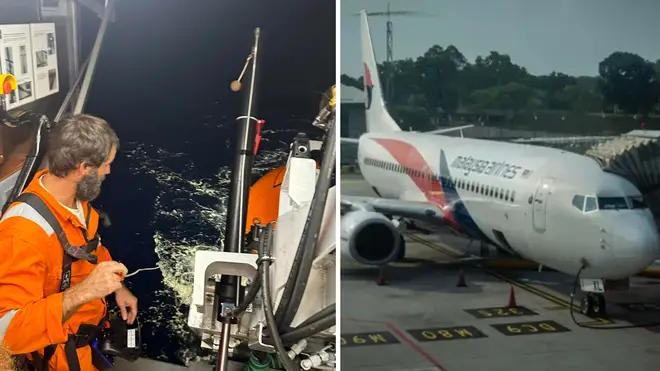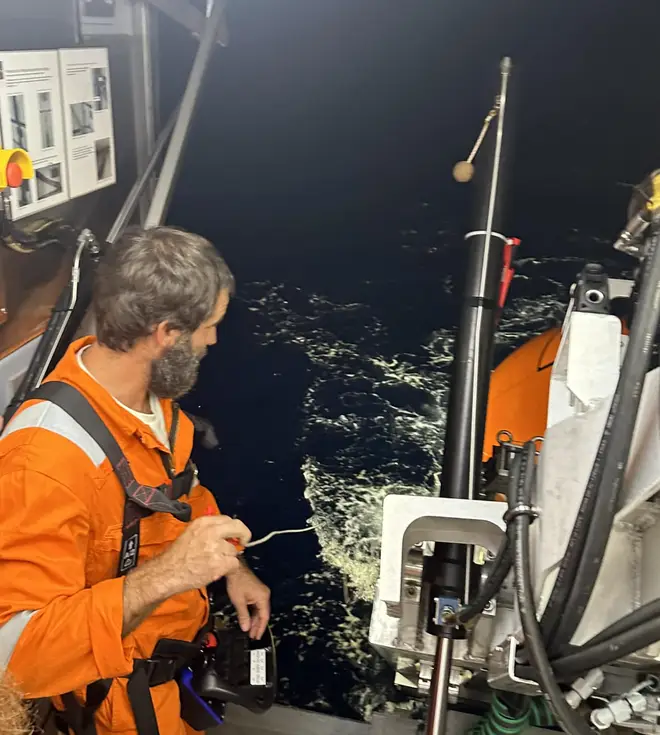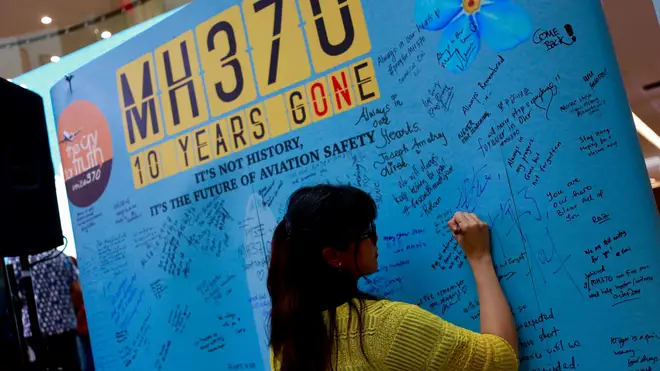
Rachel Johnson 7pm - 10pm
18 March 2024, 11:20

State-of-the-art underwater drones could be deployed to search for the wreck of MH370 as part of efforts to locate the doomed plane.
MH370 disappeared over a decade ago with 239 passengers on board bound for Beijing. It disappeared over the South China Sea and the bulk of the plane has never been found.
Tony Romeo, boss of underwater search company Deep Sea Vision, says he thinks his firm has a good chance of locating the wreckage using groundbreaking tech.
Deep Sea Vision rose to prominence when the company said it had discovered the remains of Amelia Earhart’s lost plane between Hawaii and Australia.
Mr Romeo told US show 60 Minutes that his firm wants to send one of its high-tech Hugin 6000 drones to search the ocean floor for MH370.
Read more: MH370 'could have flown for hours while passengers lay dead in cabin'

He said the drone “flies at 50 metres above the seafloor and it just goes back and forth, back and forth, back and forth.
"Big eyes, looking at everything it can see, sucks and stores data, comes back up to the surface, we pluck a thumb drive into it, pull the data out, and we watch it on a computer exactly what it looked at."
He said he believes the new tech should be able to find any of the plane’s wreckage describing the drone’s capabilities as “unbelievable.”
It recently emerged that extra fuel and oxygen were added to the aircraft before it took off, according to flight documents.
MH370 vanished from radars 10 years ago while travelling from Kuala Lumpur to Beijing, carrying 227 passengers and 12 crew.
British pilot Simon Hardy is among many to have been looking into the mystery in the past decade, with him catching the attention of the official search team over his hypothesis on the aircraft's flight path and final resting place.
He has suggested that the pilot would have remained in control for the whole flight, intentionally plunging it into the Geelvinck Fracture Zone in the ocean to ensure it would never be found.
There were also several last-minute additions to the jet that were shown in the technical log, according to the Sun.
The cockpit's oxygen levels had been topped up before the flight, despite there already being enough for a short flight to Beijing.
An extra note can be seen on the log, showing that the top-up was requested for the cockpit but nowhere else on the aircraft.
Mr Hardy told the paper: "It's an incredible coincidence that just before this aircraft disappears forever, one of the last things that was done as the engineer says nil noted[no oxygen added], then someone else gets on onboard and says it's a bit low.
"Well it's not really low at all… it's a strange coincidence that the last engineering task that was done before it headed off to oblivion was topping up crew oxygen which is only for the cockpit, not for the cabin crew."
Read more: MH370 'could have flown for hours while passengers lay dead in cabin'
Read more: MH370 breakthrough as 'new tech pinpoints' could hold key to locating missing plane
Documents also show that an extra 3,000kg of fuel has been added, which is the maximum amount of extra fuel there can be on a Boeing 777.
Mr Hardy said the extra fuel would have given the pilot a further 30 minutes to crash the plane in daylight.
"If you want to do a good ditching you do it in daylight or at least half daylight," he said.
"In the case of MH370, if the pilot has another half an hour of fuel it will be daylight.
"Another half an hour of flying would be another 244 nautical miles and the most important thing is that it will be dawn."

It comes after retired Air France pilot Patrick Blelly also said he believed the plane was "depressurised".
"It is quite easy for a pilot to depressurise an aircraft. All you have to do is switch the pressurisation valves to manual," Mr Blelly said.
If the plane's automatic system was overridden by the pilot, passengers would have only been able to survive for around 20 minutes with their emergency oxygen masks.
However, in the cockpit there were extra supplies, including masks that would keep the pilot alive for hours - allowing time to change flight path.
It would have also given the pilot time to shut off power to on-board satellite phones, preventing crew from contacting others on the ground.
Mr Blelly said it required skill and tools to make a plane "disappear" as it did, adding that there was no way it could have been an accident.
Malaysia, alongside Australia and China, ended their search for the missing plane in January 2017.